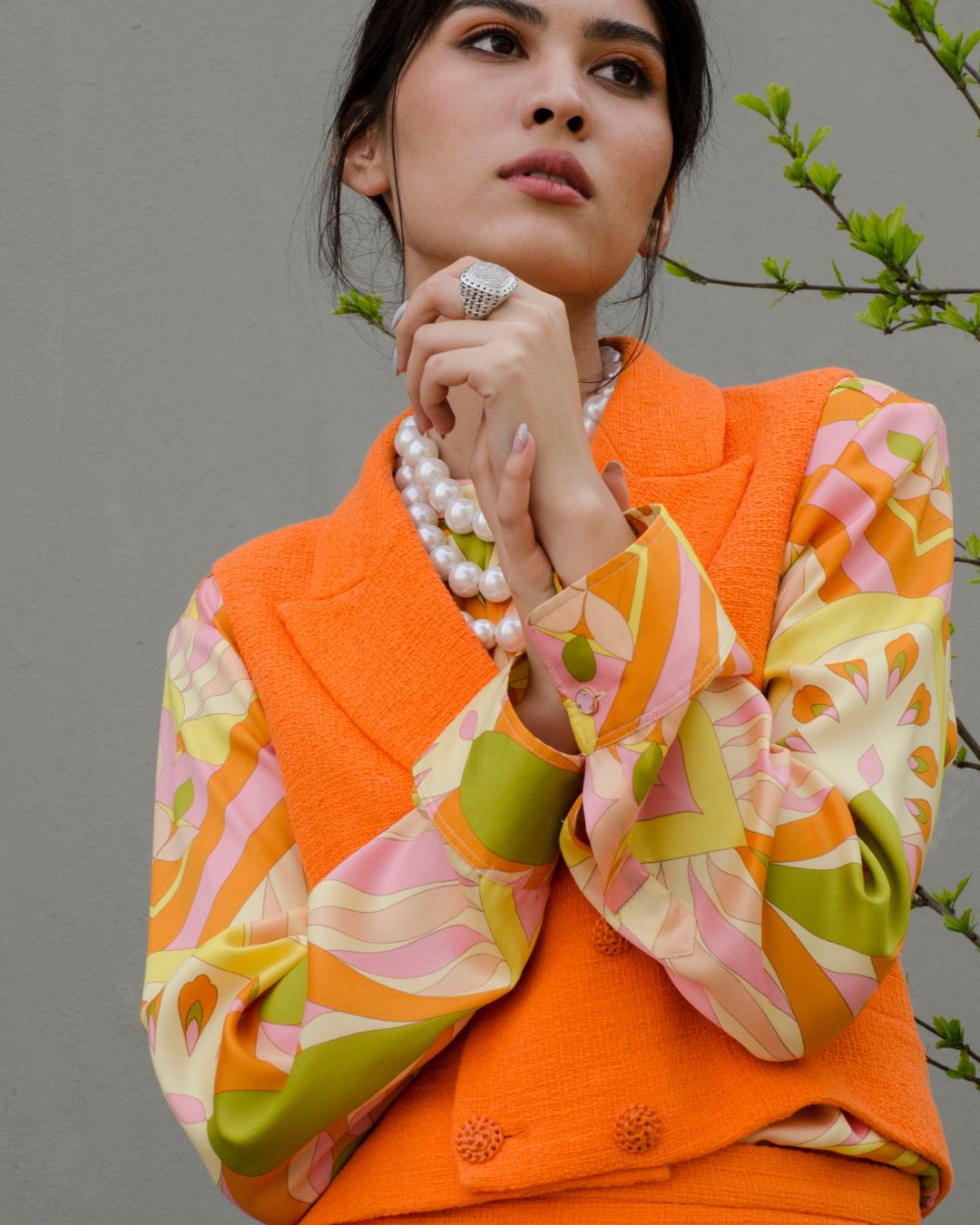

Retail merchandising plays a crucial role in the fashion industry. It helps brands to showcase their products in the best light possible, attracting customers and driving sales. Without proper merchandising, a store may struggle to grab the attention of potential buyers and stand out among competitors.
One reason why retail merchandising is essential in the fashion industry is because it creates a visually appealing shopping experience for customers. When products are displayed creatively and strategically, it can entice shoppers to explore more items and make impulse purchases. Additionally, effective merchandising can help convey the brand's image and style, helping customers identify with the brand and its values.
Moreover, retail merchandising also plays a significant role in maximizing sales opportunities. By organizing products in an attractive way and highlighting promotions or new arrivals, retailers can encourage customers to spend more time browsing and ultimately make more purchases. additional information readily available see that. This can lead to increased revenue for the store and build customer loyalty over time.
click on . In conclusion, retail merchandising is a critical aspect of success in the fashion industry. Brands that invest time and effort into creating compelling displays and experiences for their customers are likely to see positive results in terms of sales and brand recognition. So next time you walk into a store, take a moment to appreciate the thoughtfulness behind each display - it could be what convinces you to make a purchase!
Understanding consumer behavior and preferences is crucial for retail merchandising strategies in the fashion industry. By analyzing customer trends and desires, businesses can better tailor their products and marketing efforts to meet the needs of their target audience. This allows companies to create a more personalized shopping experience for shoppers, increasing customer loyalty and sales.
Consumer behavior can be influenced by a variety of factors, such as social media, celebrity endorsements, and cultural influences. By understanding these factors, retailers can anticipate consumer preferences and adjust their merchandising strategies accordingly. For example, if a certain style or color becomes popular on social media, retailers can quickly respond by stocking similar items in their stores.
In addition to monitoring external factors, retailers must also pay attention to individual customer preferences. By collecting data on past purchases and browsing habits, businesses can create targeted marketing campaigns that resonate with specific customers. This personalized approach helps build trust and loyalty among consumers, encouraging repeat business.
Overall, understanding consumer behavior is essential for success in the fashion industry. By staying attuned to current trends and individual preferences, retailers can stay ahead of the competition and provide a superior shopping experience for their customers. So next time you're out shopping for clothes, remember that your favorite store probably knows exactly what you like before you even walk through the door!
When it comes to dominating the fashion industry with cutting-edge marketing strategies, analyzing market trends and consumer behavior is key.. By understanding what customers want and how they are currently engaging with brands, businesses can make strategic decisions that will set them apart from the competition.
One of the most important aspects of this process is staying ahead of the curve.

Posted by on 2024-05-09
Building partnerships with other brands for co-branded campaigns can be a great way to elevate your brand's presence in the market through innovative fashion marketing techniques.. By collaborating with like-minded companies, you can reach new audiences and create unique, eye-catching campaigns that stand out from the competition.
Partnering with other brands allows you to tap into their existing customer base and leverage their credibility and reputation to boost your own brand awareness.

Posted by on 2024-05-09
Social media has had a major impact on fashion marketing strategies in recent years.. There are both challenges and opportunities in integrating social media into these strategies.
One of the challenges is keeping up with the constantly changing landscape of social media platforms.

Posted by on 2024-05-09
In the fashion industry, trends in influencer marketing are constantly evolving with emerging platforms and technologies playing a crucial role.. These new tools are shaping the future of how brands connect with their target audience through influencers.
With social media platforms like Instagram, TikTok, and YouTube gaining popularity among consumers, influencers have become a powerful force in driving brand awareness and engagement.

Posted by on 2024-05-09
Visual merchandising techniques are essential when it comes to attracting customers in the fashion industry. By using creative displays and eye-catching arrangements, retailers can entice shoppers into their stores. Without implementing these strategies, a store may struggle to stand out and draw in potential buyers.
One effective technique is using color coordination to create an aesthetically pleasing display. This can help catch the attention of passersby and make them more likely to enter the store. Another popular method is utilizing signage and banners to highlight promotions or new arrivals, which can create a sense of urgency for customers to make a purchase.
Furthermore, proper lighting can also play a significant role in enhancing the overall shopping experience. Dark or dimly lit stores can deter customers from browsing for too long, while well-lit spaces can make products appear more appealing and inviting.
In addition, incorporating seasonal themes and trends into displays can help keep the store fresh and up-to-date with current fashion movements. By regularly updating window displays and interior layouts, retailers can show customers that they are on top of the latest styles.
Overall, visual merchandising techniques are crucial for attracting customers in the competitive fashion industry. Without these strategies in place, retailers may struggle to draw in shoppers and ultimately miss out on potential sales opportunities.

When it comes to retail merchandising strategies in the fashion industry, effective product placement and store layout are key factors for success. By strategically placing products in high-traffic areas and creating an aesthetically pleasing store layout, retailers can attract more customers and increase sales.
Product placement is crucial in grabbing the attention of shoppers and encouraging them to make a purchase. Placing popular or new items at the front of the store or near the entrance can entice customers to stop and take a closer look. Additionally, grouping complementary products together can encourage upselling and cross-selling opportunities.
Store layout also plays a significant role in influencing customer behavior. A well-designed store layout can guide customers through the store, leading them to different sections and encouraging them to explore all that the store has to offer. By creating visually appealing displays and utilizing signage effectively, retailers can create an engaging shopping experience for customers.
Overall, effective product placement and store layout are essential components of successful retail merchandising strategies in the fashion industry. By paying attention to these key elements, retailers can enhance their brand image, drive sales, and ultimately improve customer satisfaction.
In today's world, technology plays a crucial role in enhancing the customer experience when it comes to retail merchandising strategies in the fashion industry. By utilizing advanced technology, retailers can provide customers with a more personalized and seamless shopping experience.
One way that technology is being used to improve customer satisfaction is through the use of virtual reality and augmented reality. These tools allow customers to try on clothing virtually, see how different items look together, and even customize their own designs. This not only makes the shopping process more enjoyable for customers but also helps them make more informed purchasing decisions.
Another way that technology is being leveraged in retail merchandising is through the use of artificial intelligence and machine learning. These technologies can analyze customer data and behavior to provide personalized recommendations, predict trends, and optimize inventory management. By tailoring the shopping experience to each individual customer, retailers can increase sales and build stronger relationships with their clientele.
Overall, utilizing technology for enhanced customer experience in retail merchandising is essential for staying competitive in today's fast-paced fashion industry. Retailers who embrace new technologies will be able to attract and retain customers more effectively than those who rely solely on traditional methods. So next time you go shopping for clothes, remember that technology is working behind the scenes to make your experience as enjoyable as possible!

When it comes to retail merchandising strategies in the fashion industry, implementing seasonal promotions and sales strategies is key. By offering discounts and special deals during peak shopping times, companies can attract more customers and increase their sales.
One of the most effective ways to drive traffic to a store or website is by running promotions that appeal to the current season. For example, offering a discount on summer dresses in the middle of winter might not be as effective as promoting warm coats or boots. By aligning promotions with the season, companies can better meet customer needs and increase their chances of making a sale.
In addition to seasonal promotions, sales strategies are also important for maximizing revenue. Offering buy one get one free deals or limited time offers can create a sense of urgency among customers, prompting them to make a purchase before the deal expires. By creating a sense of scarcity or exclusivity, companies can drive up demand for their products and boost sales.
Overall, implementing seasonal promotions and sales strategies is crucial for success in the fashion industry. By staying ahead of trends and offering attractive deals to customers, companies can increase their visibility and attract more business. So next time you're planning your merchandising strategy, don't forget to consider how you can use promotions and sales to drive growth!
Collaborating with influencers and brand ambassadors is a key component of successful retail merchandising strategies in the fashion industry. By partnering with individuals who have a strong presence and influence on social media, brands can reach a wider audience and increase their visibility. This type of collaboration helps to create buzz around new products and collections, driving sales and increasing brand awareness.
Influencers and brand ambassadors bring a sense of authenticity and credibility to a brand, as their followers trust their opinions and recommendations. By working with these individuals, brands can tap into their loyal fan base and leverage their influence to promote products in a more organic way.
Furthermore, collaborating with influencers and brand ambassadors allows brands to stay relevant in an ever-changing market. These individuals are often at the forefront of trends and have a keen eye for what is popular among consumers. By aligning themselves with these trendsetters, brands can ensure that they are always ahead of the curve.
Overall, collaborating with influencers and brand ambassadors is essential for any fashion retailer looking to stay competitive in today's digital age. Through these partnerships, brands can connect with consumers on a more personal level and drive engagement with their target audience. So next time you're thinking about your retail merchandising strategy, don't forget to consider the power of influencer collaborations!
When it comes to retail merchandising strategies in the fashion industry, analyzing data and feedback is key for continuous improvement. By looking at sales numbers, customer reviews, and trends, retailers can identify what's working well and what needs to be adjusted. Without this information, companies may struggle to stay relevant in a fast-paced market.
Feedback from customers plays a crucial role in shaping merchandising decisions. If shoppers are unhappy with a certain product or display, it's important for retailers to take note and make changes accordingly. Ignoring feedback can lead to missed opportunities for growth and ultimately result in loss of sales.
Data analysis also allows retailers to track trends and predict future demand. By understanding what customers are buying and when they're buying it, companies can better plan their inventory and marketing strategies. This proactive approach can help retailers stay ahead of the competition and meet consumer expectations.
In conclusion, analyzing data and feedback is essential for continuous improvement in retail merchandising strategies within the fashion industry. Without these insights, companies may struggle to adapt to changing market conditions and consumer preferences. By staying proactive and responsive to customer feedback, retailers can position themselves for long-term success in a competitive industry.